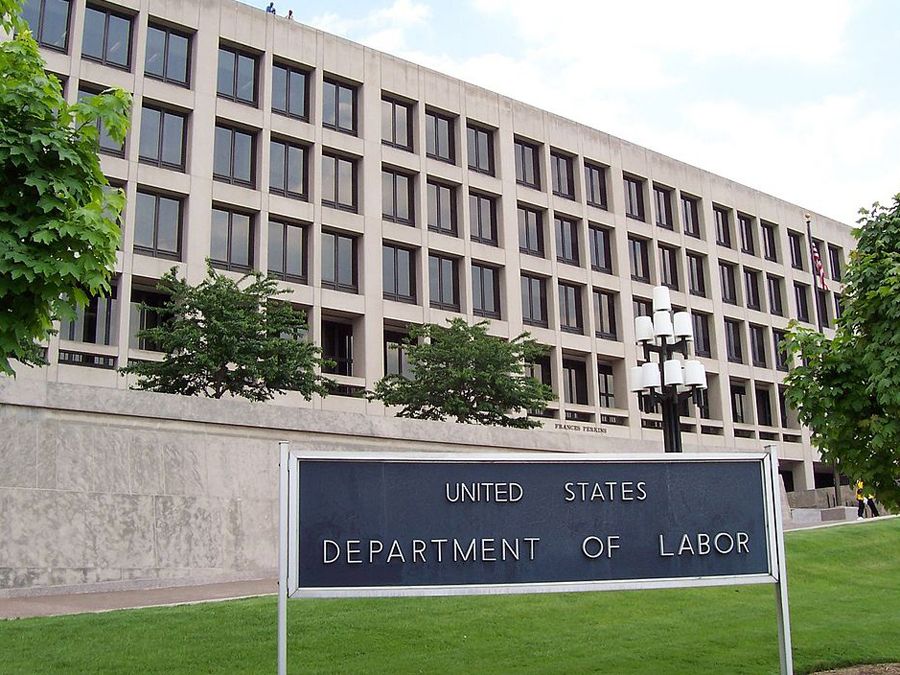Very few defined-contribution plans include ESG investments on their menus, and the Department of Labor is moving to keep it that way.
Under a proposed rule the DOL published Tuesday, the agency seeks to make clear that plan fiduciaries cannot include investments that use environmental, social or governance criteria, unless there are obvious pecuniary reasons for using such products.
Though the DOL generally has taken that position for years, different administrations have issued guidance that differed substantially in tone. And unlike guidance, a formal rule carries more weight and can be difficult to reverse, lawyers said.
“There is very low utilization today,” said Jason Roberts, CEO of the Pension Resource Institute. “This is sort of a heavy-handed solution in search of a problem.”
In 2018, just 2.9% of 401(k) plans included investments that were specifically packaged as ESG products, according to a report from the Plan Sponsor Council of America, and those investments accounted for just 0.1% of plan assets.
In its proposal, the DOL said it is concerned that plan fiduciaries are considering ESG investments for reasons other than the benefit of participants, such as lowering costs or improving returns.
But proponents of ESG investing have long pointed to performance benefits in their strategies, as publicly traded companies that address risks associated with social and environmental factors tend to do better financially than those that ignore such risks.
Results from the first quarter of 2020 showed ESG products had lower losses than peers. Mutual funds that carried Morningstar’s highest sustainability rating had average returns of -17.7%, while those with the lowest sustainability rating returned an average of -26.6%. During that time, the S&P 500 had a negative return of 23.6%.
Not all funds that have relatively high sustainability ratings are specifically marketed as ESG products, and that is something that might be lost on the Trump administration, said Heather Slavkin Corzo, head of U.S. policy at the United Nations’ Principles for Responsible Investment.
Mainstream products often include language in their prospectuses outlining ESG criteria used to improve performance or reduce risk.
“There’s actually a fundamental misunderstanding about what ESG is. The DOL seems to envision ESG as an asset class,” Slavkin Corzo said. “The evidence is growing, and now it is really incontrovertible, that ESG is a risk management strategy. It’s hard to argue that climate change is not going to have a material impact on asset prices.”
While the language in the DOL’s proposal appears harsher toward ESG investments than in prior guidance, the basic message that the regulator is conveying hasn’t changed much, and plan fiduciaries should understand that, she said.
However, one area where the DOL does appear to have changed its stance is on the use of ESG funds as the default investments in 401(k)s and other plans, as the proposal includes a “blanket prohibition” on using them, she noted.
“In the past, the Democratic and Republican administrations have gone back and forth on this with sub-regulatory guidance. As a result of that level of guidance suggests, it could be easily reversed by a new administration of the opposite party, and it was,” said Fred Reish, partner at Faegre Drinker, in an email. “However, the tone and import of the proposed regulation are different. This proposal appears to go much further in opposing ESG investments.”
Further, the DOL’s tone, and its use of a proposed rule, rather than guidance, suggest that “this seems to be more political and strident than the earlier guidance,” Reish said.
In 2015, the Obama administration DOL put forth guidance explicitly stating that ESG factors could be considered economic factors in their own right, said Joshua Lichtenstein, partner at Ropes & Gray. That changed slightly in 2018, when the Trump administration’s DOL cautioned fiduciaries about considering ESG factors as economic ones, Lichtenstein noted.
The proposed rule “largely shuts down the enterprise of considering nonpecuniary factors, and it makes the bar fairly high for showing that something was just a pecuniary factor,” he said.
Complicating the issue is that “ESG is basically a part of every fund now, to some degree,” he said.
Lately, some plan sponsors have considered ESG investments in part because having those options can get younger participants more engaged with their retirement plans, Lichtenstein noted.
Some plans, particularly those affiliated with religious groups, have vetted investments based largely on social or political factors, but that is not the norm, Roberts said.
Opposition to ESG has generally come from companies whose stock stands to be excluded from such products — and those companies tend to have big pockets and sway in government, he said.
“401(k) plans are designed to give participants choice. The balance lies in having clearly communicated investment options made available,” Roberts said. “The DOL presupposed that ESG funds are going to underperform … and we are constantly seeing evidence to the contrary.”
There is a 30-day comment period for the proposed rule. If it goes forward before a potential change in administrations due to this year’s election, there could be legal challenges, Slavkin Corzo said.
“I don’t think the comments on this regulation will align on bright-line partisan or interest group basis,” Lichtenstein said. “There are meaningful comments that all sorts of different groups, including plan sponsor groups, might have about the breadth of the rule and some of the terms that are used.”
A rule finalized before the end of the year could be overturned by a potential Democratic administration, though that process is not necessarily a quick one, he said. Further, the DOL’s forthcoming fiduciary rule could draw attention away from the ESG rule, Lichtenstein noted.
“Nobody ever accused [Labor Secretary] Eugene Scalia of not being extremely well-versed on administrative procedures,” he said.








